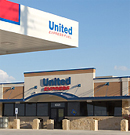In this period of economic and demographic fluctuation, U.S. retailers are simultaneously stretching and shrinking their stores to promote convenience for shoppers and compete with online options, according to What’s in Store, the annual trends publication from International Dairy-Deli-Bakery Association.
Grocery shoppers continue to weather the Great Recession and convenient shopping for the most vital of retail staples—food—is undergoing a metamorphosis. While larger retail outlets may see less traffic because many shoppers are buying more items online, some grocery retailers are reducing their footprint to squeeze into city locations. They, and some others, are expanding specific aspects of their stores, such as fresh offerings and tiered private label systems, to draw in customers, Reuters reported.
 Supermarket sales are facing competition from alternative food retail categories like convenience stores. Traditional supermarket sales rose 4.4% in 2011 to total $430 billion, while store count slipped 1%, according to Willard Bishop’s The Future of Food Retailing. Supermarkets continue to struggle as the effects of the recession left their market share divided with limited-assortment stores, supercenters, and wholesale clubs. The trend is likely to continue as Willard Bishop projects traditional supermarkets sales growth will fall at an annual rate of 1.4%.
Supermarket sales are facing competition from alternative food retail categories like convenience stores. Traditional supermarket sales rose 4.4% in 2011 to total $430 billion, while store count slipped 1%, according to Willard Bishop’s The Future of Food Retailing. Supermarkets continue to struggle as the effects of the recession left their market share divided with limited-assortment stores, supercenters, and wholesale clubs. The trend is likely to continue as Willard Bishop projects traditional supermarkets sales growth will fall at an annual rate of 1.4%.
At the same time, traditional supermarket market share is forecast to decline to 37.4% by 2016 from 40.1% in 2011.
Drug and dollar stores are stepping up their fresh food offerings as shoppers change their routines from the early recession. Analysts note a behavioral shift as shoppers take frequent smaller fill-in trips to these venues between paychecks rather than hitting the club store once a month to buy in bulk. Shopper prioritization of value and health in food choices is sharpening as they hone their frugality out of necessity.
Online shopping represents another major shift in the food retail market. Online grocery sales climbed 11.6% in 2011 compared to the year before. In-store sales grew just 2.5% in the same timeframe, according to MyWebGrocer. The average online grocery basket size is $145.
Food retailers are facing a strategic quandary amid increased demand for fresh foods and perishables at the same time that consumers are increasing online buying, said Tim O’Connor, vice president, RetailNet Group. “There’s always going to be a physical component for fresh food because that’s what people perceive as fresh and immediate,” O’Connor said. He said retailers need to build trust with online shoppers through a friendly personal tool that remembers what you normally buy online. Retailers must also deliver high-quality fresh foods to maintain consumer trust in the online shopping method.
Bill Bishop, chief architect, Brick Meets Click, predicts that the digitally engaged 21st -century shopper will thrive in a multichannel retail landscape. These shoppers look to the Internet for answers and get assistance from third parties. Consumers also operate in a social network that leverages strong word-of mouth influence on shopper opinion and behavior.
Virtual grocery shopping has also hit U.S. shores. Online grocer Peapod has organized a limited run of a virtual setup, consisting of 70 items, in metro transit locations in Philadelphia and Chicago. Android and iPhone users can download a free Peapod mobile app, scan a QR code to select and order the groceries, and set up delivery for the next day.




